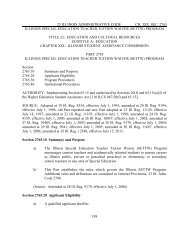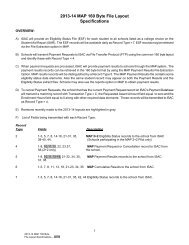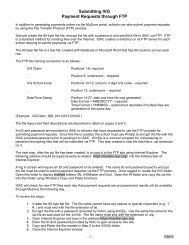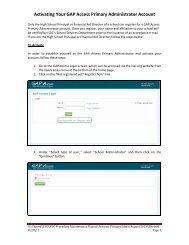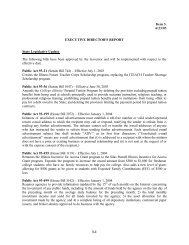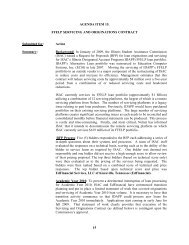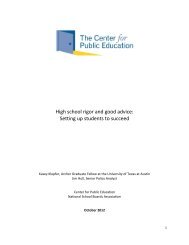MORE GUIDANCE, BETTER RESULTS?
MORE GUIDANCE, BETTER RESULTS?
MORE GUIDANCE, BETTER RESULTS?
You also want an ePaper? Increase the reach of your titles
YUMPU automatically turns print PDFs into web optimized ePapers that Google loves.
Appendix A includes three descriptive tables — one for the pooled sample and one foreach of Lorain County Community College and Owens Community College separately. Tableswere created separately for all three groups since impact analyses were conducted for the pooledsample as well as for Lorain and Owens separately. Each table shows selected characteristics ofsample members at baseline for the full sample, as well as for the program and control groupsseparately. The full sample data provide a descriptive profile of the types of students who participatedin the study. Separating these data into program and control groups is one way to assessthe success of random assignment at creating statistically equivalent research groups atbaseline. Since students were randomly assigned to the program and control groups, their characteristicsshould generally be similar at baseline. For example, the percentage of males in theprogram group should be about the same as the percentage of males in the control group.Comparing Baseline Characteristics Across Research GroupsPooled SampleAppendix Table A.1 compares the baseline characteristics of program and controlgroup students from the pooled sample (Lorain and Owens combined). For the most part, thereis no evidence of statistically significant differences between program and control group memberson their baseline characteristics (as indicated by the absence of asterisks in the right-handcolumn), though, in a few instances, program and control group students differed significantlyon their baseline characteristics. For example, 19.0 percent of the program group lived in ahousehold in public or Section 8 housing compared with 14.1 percent of the control group. Thethree asterisks in the right-hand column indicate that this difference is statistically significant,suggesting that program group members and control group members differed with respect totheir probability of being in a household in public or Section 8 housing. Since such a largenumber of significance tests were calculated, occasional statistically significant differences betweenprogram and control group members are to be expected. Some other statistically significantdifferences are reflected in receipt of government benefits, likelihood of being ever employed,and having a language other than English spoken regularly at home, with programgroup members reporting these characteristics more often than control group members.When examining Table A.1 for differences between the program and control groups, it isimportant to note that the table shows separate statistical tests for each gender, each age group,each racial/ethnic group, and each category of several other variables that are mutually exclusive— that is, students can report being only one gender or the other, only one racial/ethnic group oranother, and so forth. Such tests are not independent since the categories, like percent male andpercent female, are not independent. This should be taken into account when noting the numberof observable characteristics that have statistically significant differences. Using “Region in69



